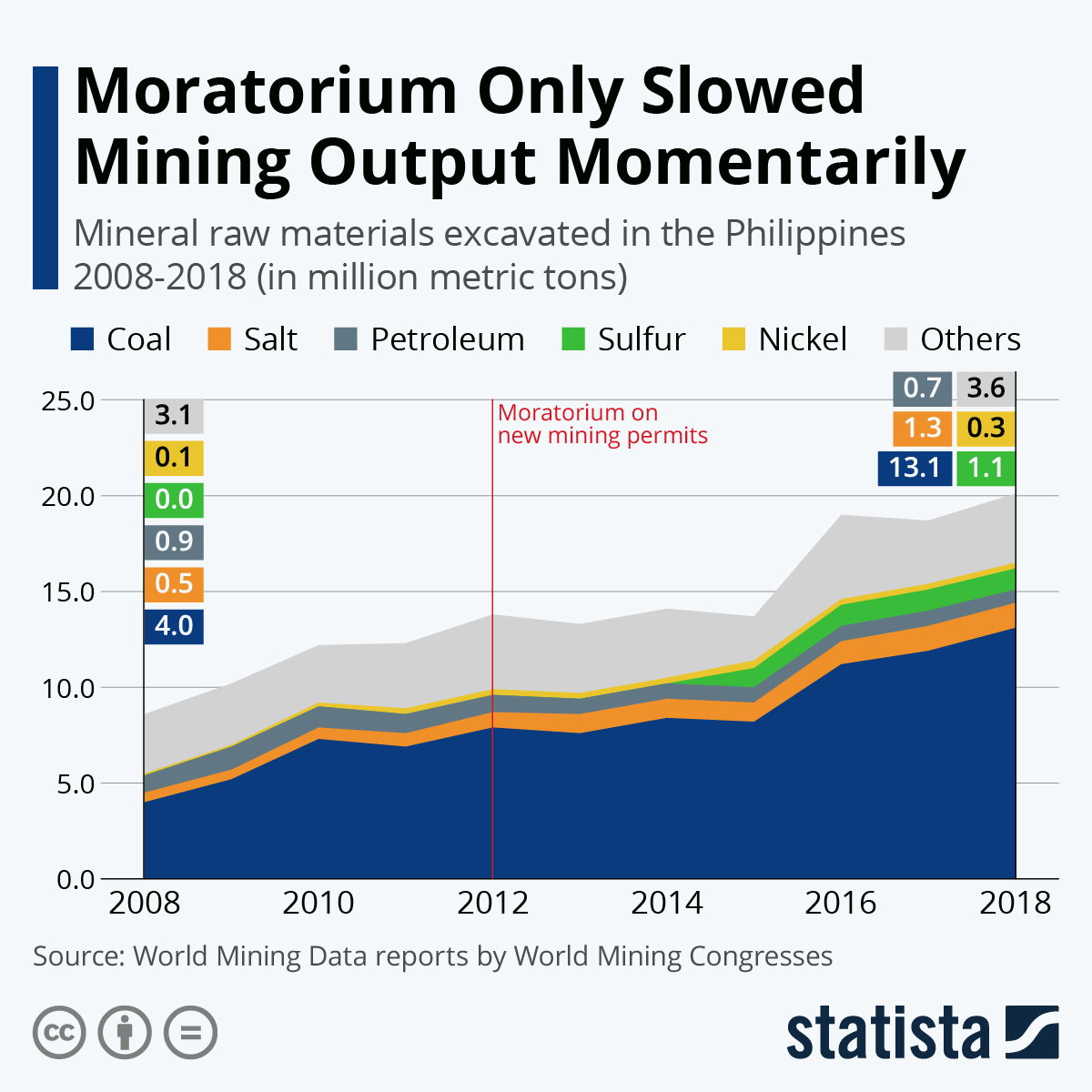Last week, Filipino President Rodrigo Duterte lifted a 9-year moratorium of new mining permits. The move is expected to speed up some already existing applications. The executive order also includes directions to the environment ministry to stringently implement environmental and safety restrictions as part of the mining operations.
Data by the World Mining Congresses shows that while the moratorium – implemented by former President Benigno Aquino III in 2012 – momentarily suspended the growth of Filipino mining output, the amount of mineral raw materials excavated in the Philippines already grew again from 2016 onwards.
The increase was mainly driven by coal, but also sulfur. The former was boosted in the country to meet surging energy demand in the second half of the last decade.
While data is only available until 2018, nickel extraction potentially also grew in the last couple of years after demand from China made excavating the mineral more lucrative. The current government’s hardline approach to mining had already softened somewhat in 2019 when Duterte appealed to nickel miners to work together on growth, albeit within environmental restrictions. An export ban of nickel from Indonesia – the world’s biggest producer - was a key factor making nickel more in demand and opened up a window of opportunity for the global number two producer, the Philippines.
Stops to mining in the Philippines have been frequent, including under Duterte, because of environmental and safety concerns. The Filipino President had previously upheld a ban of open-pit mining and recently halted nickel mining at an island in the Tawi-Tawi province over concerns of environmental destruction.





















